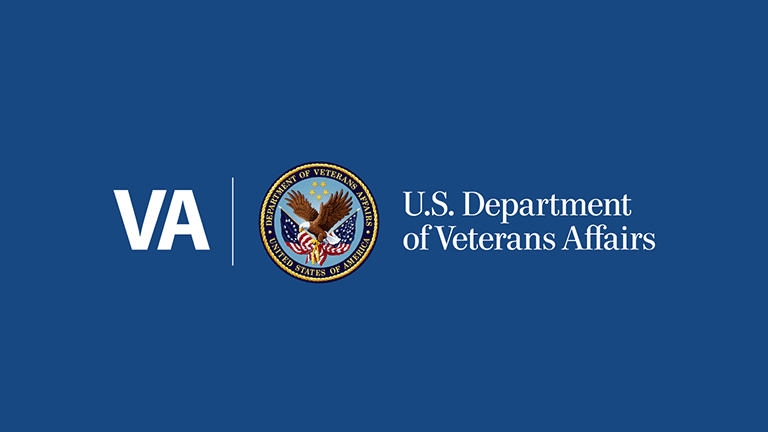VA Northeast Ohio Healthcare System’s Design-on-Demand Innovation team routinely creates solutions for Veteran patients that enhance care and improve quality of life.
VA health care providers encounter a wide range of Veteran patient injuries and conditions that routinely present opportunities for innovations that will improve patients’ quality of life. One such innovation, developed recently by the VA Northeast Ohio Healthcare System’s Design-on-Demand innovation team, is a special silicone band, which will hold oxygen cannula tubes for individuals who have lost cartilage around one or both ears.
Traditional oxygen cannula tubing is typically rested over a patient’s ears to create a secure fit and free oxygen flow to the nose fitting. For patients without one or both ears, tubing will not stay in place and oxygen flow is not reliably delivered. Patients have the option to wear a full facemask, but many patients find this to be both obtrusive and uncomfortable, and it often interferes with clear speech. The innovative molded silicone band addresses this challenge cleverly by securely holding the tubing to enable effective oxygen delivery without resorting to facemask use.
This situation was faced by Veteran patient Alan Yak, an Air Force Veteran who served during the Vietnam War who expressed concern regarding his ability to wear his oxygen correctly and comfortably. Eager to help resolve his need and find a solution, Yak’s occupational therapist Chelsey Meader contacted VANEOHS innovation specialist Gina Green for ideas.
The Louis Stokes Cleveland VA Medical Center Design-on-Demand team then got to work.
Through discussions with the patient and internal team meetings, Biomedical Engineer Zachary Thumser was inspired to refine a prototype originally created during the Covid-19 pandemic. The new silicone band incorporated special lobes to use friction to fasten tubes in place and accomplish the intended objective. The new device is effective, comfortable, washable and can be worn 24 hours a day.
After a few weeks at home with the device, Yak was asked if he’s still using the band: “Yes, I do! It’s been great. I use it every day—even in the shower.”
“Sometimes the simplest solution is the best,” Green said. “This band can be created on demand, on site, by our 3D printing service. The silicone band can be printed within 24 hours, and it’s ready for use by the patient quickly and with minimal training.”
Green said this device has generated ideas for multiple new health care applications by the innovation team.
“In the future, we could adapt the band to help patients with skin breakdown or facial deformities that make standard oxygen delivery difficult,” she added.
Topics in this story
More Stories
Women Veterans are three times more likely to experience migraines than men.
The National Veterans Creative Arts Festival is being held May 11-18 in Indianapolis.
Meet Naticia Sapp: Air Force Veteran, Nurse, Doula and Youth Advocate. She's on her maternity journey.






I work as a respiratory nurse. Where can I get additional. Information on this?
This sounds interesting. Although my husband does not need oxygen 24/7, the missing ear cartilage makes a hospital stay rather uncomforable if he needs oxygen. It’s already a problem for his hearing aid and glasses competing for the minimal support the remaining ear can give. I hope you will pursue this design and make it available for more vets.
What a great idea! I hope that it is quickly shared throughout the VA system and then patented and shared with the rest of the world so that others can take advantage of this great discovery and the VA can make some money.
Congratulations to the whole team, and the veterans that bravely expressed their needs and were the first to try this new innovation. What a win-win for everyone! With all the troubles I’ve had at the VA Hospital and clinics where I am, it’s nice to hear the good news.